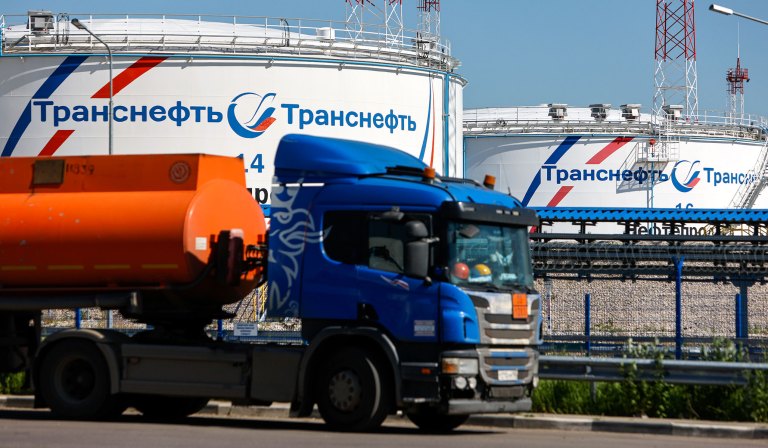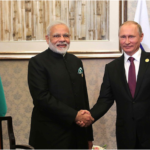
The First Energy War of the 21st Century

article By MARK P. Mills
September 2, 2022 6:30 AMRussia’s war on Ukraine has greatly clarified the need for non-Russian energy sources. Will the rest of the world rise to the challenge?
How long can Russia afford to wage a ground war in Europe? One might be reasonably skeptical of answers coming from those who didn’t see any prospect for Russia to invade Ukraine. The answer, as with any war, will emerge from what we learn about not just battlefield capabilities, but also about the financial capabilities of the counter-parties to sustain war, and the non-military capacities each side has to inflict economic harm on the other.
One of the first responses to the invasion included freezing $300 billion worth of Russia’s financial reserves — about half of that nation’s pre-invasion war chest — residing in Western financial institutions. Then Congress appropriated $40 billion in financial aid for Ukraine. Those actions were followed by the U.S. and Europe seeking to reduce Russia’s income with sanctions on purchasing Russian oil or natural gas, some implemented, and others promised or threatened. So far, the effects aren’t what policy-makers had hoped or expected.
Russia’s cash reserves have rebounded. Sales of oil and natural gas have replenished the treasury. In fact, Russia’s current-account balance soared to $70 billion in the second quarter of this year alone, the biggest since the fall of the Berlin Wall. That happened even though its overall gas exports to Europe are some 50 percent below pre-invasion levels, and Russian oil is sold at a deep discount around the world. But exports are now sold in an environment of far higher global prices. (Is it a complete coincidence that Putin launched the war when oil prices were already heading north of $100 a barrel?)
Countries, including China and India, have ignored the sanctions and overtly expanded purchases of Russian energy because they enjoy the benefit of discounts. India co-mingles Russian oil at refineries and sells diesel fuel to Europe (at high prices). Even Saudi Arabia buys discounted Russian crude, enabling more Saudi exports at sanction-free market prices. Russian crude has also continued to move into markets using shippers that work around sanctions both overtly and via “dark market” traders. It’s not the first time the world has learned what happens with energy sanctions. Similar efforts directed at Iran and Venezuela saw crude continue to flow via “ghost fleet” tactics, fake registries, spoofing of ship location, and surreptitious transfers at sea.
The natural-gas dynamic is playing out a little differently but with similar consequences. European nations have scrambled to increase pipeline flows from non-Russian sources (Algeria, for example) and, to the extent feasible with existing infrastructure, increase imports of seaborne liquefied natural gas (LNG) from Qatar and America. At the same time, the EU has seen gas demand slide. Many industrial boilers and power plants are switching from gas to oil (increasing the EU oil-import bill). Other industrial facilities have throttled back and many, because of staggering wholesale energy price increases (some reaching as high as 1000 percent), have shut down in a financially devastating slide towards deindustrialization. Epitomizing the dismal dimming of the European economy, cities across the continent are literally turning off lights with bans on lighting, including signage, landmarks, and even traffic lights (all of which, by the way, in energy terms, are trivial), along with mandating higher air-conditioning temperatures, or fining shopkeepers for leaving doors open. Huge swaths of the European economy are descending into energy poverty.
The effect of all this has been to vault natural gas and oil prices everywhere, not just in Europe, with the high prices and uncertainties ripping destructively through every facet of the economy. Russia triggered this cascade of events. But the price that’s being paid by the world is a direct result of two decades of European energy policies.
Those policies distill to a monomaniacal pursuit of wind and solar energy (and now batteries) while simultaneously shutting down existing energy supplies from coal mines and coal power plants to nuclear plants and offshore oil and gas fields. Over the past two decades, Europe has spent trillions of dollars in pursuit of an “energy transition” to replace hydrocarbons. But the EU today still gets 70 percent of all its energy from the latter.
So much of the danger arising out of the reckless decisions by so many European countries to depend so heavily on Russia for essential supplies of hydrocarbons was amplified by the fact that it’s impossible to surge solar and wind energy production in meaningful time frames. Consequently, Putin still holds one unused card to weaponize energy, a kind of economic ‘nuclear’ option: Russia could yet choose to sanction, or embargo, the West by radically reducing overall energy shipments to the world, rather than merely throttling back Europe’s supplies while selling more elsewhere. Such an embargo would really send prices soaring. It wouldn’t be the first time a major energy producer sought to inflict economic punishment.
The first two global energy shocks in modern times — the 1973 Arab oil embargo and the 1979 Iranian revolution, each of which entailed a loss of supply roughly equal to taking half of Russia’s exports off the market — triggered oil price increases of 200 percent and 400 percent, respectively, and touched off global recessions. We have yet to experience (as of this writing) a loss of supply or rise in prices comparable to the previous two energy shocks. Today, Russia remains one of the world’s three largest producers and exporters of petroleum and natural gas. The loss of a major share, never mind all, of Russia’s energy supplies to the world would trigger a third (and the greatest) global energy shock since the invention of the computer. In such a case, JPMorgan analysts recently noted, oil could hit $380 a barrel.
This time, there’s potential for even greater harm because, unlike the previous two oil-centric shocks, the Russia factor also involves natural gas at a scale comparable to the oil at risk. While oil keeps everything moving, natural gas keeps the lights on and is an irreplaceable chemical feedstock in both manufacturing and food supply chains.
Some believe Russia wouldn’t or couldn’t invoke such an embargo for technical reasons. But oil is easy to store; Iran’s been doing it for years and even now has over 100 million barrels in “floating storage” (tankers) awaiting the end of sanctions there. While natural gas is harder to store, it can be simply flared or burned off at the source instead of sold. Of course, the latter is just like burning money. But the key is how long Russia could afford to inflict global economic pain while enduring the financial loss of, say, half its export income. The answer is found in Russia’s restored financial war chest. Guessing whether such an embargo is likely falls into the fog-of-war calculus.
Naïveté about energy realities and Russian ambitions (or ambitions of other unfriendly nations) has robbed Europe and the U.S. of important “soft power” options, i.e., precisely the kind of geopolitical leverage that Russia has now. Civilization still depends on hydrocarbons for 84 percent of all energy, which is a mere two percentage points lower than it was two decades ago. This comes after some $5 trillion of global spending on non-hydrocarbons. Solar and wind technologies today supply barely 5 percent of global energy. Electric vehicles still offset less than 0.5 percent of world oil demand.
There is no small irony in the fact that America’s Congress has now committed to follow Europe down the same energy path, with the misnamed Inflation Reduction Act and the plan to spend at least $400 billion on alternative energy. Even if all that money is spent — it’s possible a future Congress could defund it — fifteen years from now America will still get the majority of its energy from hydrocarbons.
Regardless of how the Ukraine crisis plays out, no matter how much money is spent on alternatives, the world will need greater supplies of hydrocarbons to both diminish Russian influence — not to mention minimize entanglements in the ever-troubled Middle East — while also fueling economic growth. You’d think policy-makers would be focusing on a critical geopolitical and economic question: Who will supply the world with those essential hydrocarbons.
The opportunities to expand non-Russian hydrocarbon supplies are dominated by just three domains: OPEC, deep-water rigs (global and U.S. offshore), and America’s shale fields.
It’s worth remembering that, in roughly a single decade, the United States went from being the world’s biggest importer of petroleum and an importer of natural gas to becoming (for now) the world’s biggest exporter of the latter and one of the biggest exporters of the former. To put this into geopolitical perspective: The growth in U.S. production over the past decade was greater than Russia’s total supply of oil and gas to Europe.
Any prospects for U.S. oil and gas firms to expand yet again will require taking the kinds of risks that are invariably associated with adopting new technologies and deploying capital onshore and offshore. And those prospects are enormously influenced by government actions.
One can imagine — because it could be done, not that it will be done — Congress engaging in a reset of energy policies to facilitate a radical increase in domestic hydrocarbon production and exports. Think of it as a shale resurgence along with a similar expansion of deep-water production. Such a reset need not, in fact shouldn’t, replace alternative energy ambitions, but complement them.
And it bears noting that enacting such legislation would not require subsidies or cost taxpayers money, but instead lead to reduced energy prices for consumers, as well as profits and jobs at American firms.
But as it stands today, America’s hydrocarbon industries face a potent combination of policy and regulatory impediments, higher costs of materials and services, lingering supply-chain disruptions from the global lockdowns, and skilled-labor shortages. At least one U.S. shale CEO has said that not even $200 oil would inspire his firm to expand production faster. And this says nothing about the investment-killing potential of calls for “windfall profits” taxes which, if implemented, would be as destructive and ineffective as they were when tried in 1980.
It is possible that reality may impact American policy-makers as it has those in Europe, in which case there is some hope of an energy realpolitik yet emerging with an “all of the above” energy policy. And if that were to happen — something that will require legislation, not executive orders or rhetoric — then one might yet see the mighty American hydrocarbon machine help restore order and economic sanity to the world.

More in INTERNATIONAL
A New Hope for Free Markets in Canada
Argentina’s Inflation Crisis Is a Cautionary Tale for the U.S.
Energy Price-Fixing Looms over the EU
China’s Property-Market Party Is Over
AROUND THE WEB

Delhi Mom Exposes Her Self-made 6 Crorepati SecretDAILY NEWSDelhi Millionaire Mom Exposes How to Make Lakhs Per Month from HomeDAILY NEWSCelebrities That Met Their Significant Other on Their Own Set!INSPIREDOTTop 30 Most Beautiful Women in the WorldINSPIREDOTTreatment That Might Help You Against Knee Pain (Search Here)KNEE PAIN | SEARCH ADSHaving Dreams About Your Crush? This is What They Can Really MeanINSPIREDOT
RECOMMENDED
A Surprise Turn in the Trump Search-Warrant Case
Donald Trump Is Still a Lunatic
Which Side Is Itching for a Civil War Again?
The Plot Thickens in the Case of Ashley Biden’s Diary
Joe Biden Illegally ‘Canceling’ Student Loans Would Be a Middle Finger to America
Top Med Schools Weed Out DEI-Skeptical Applicants, New Report Finds
ISAAC SCHORR
THE LATEST
The Left Misunderstands the Problem with National Conservatism
Seven Ways to Amend the Constitution
DOJ Takes a Risk to Challenge Special-Master Order in Trump Case
Iran’s Dictator Appears in Public after Being Bedridden with Illness
DOJ Appeals Judge’s Ruling on Mar-a-Lago Raid Documents
This Constitution Day, Let Us Be Thankful That We Rule through Words, Not Violence
ADAM M. CARRINGTON
MOST POPULAR

Massachusetts Governor Activates National Guard as Martha’s Vineyard Migrants Removed from Island

The Woman King’s History Is Worse Than I Thought

The 9/11 Conundrum: Terrorists Who Should Be Put to Death but Can’t Be Tried
ANDREW C. MCCARTHYVIEW MORELoading…
- Sections
- Topics
- Magazine
- About
- More
NewslettersMorning Jolt (M-F)NR Daily (M-Sa)Breaking News (M-Su)
© 2022 National Review2
Free Articles Left This Month
Remove the paywall.
Already a member? Sign in.˅By continuing to our site you agree to our Terms of Service and Privacy Policy. Learn about how we use cookies.



We’d like to send you notifications of our latest news and opinion. Unsubscribe anytime.AllowCancel


